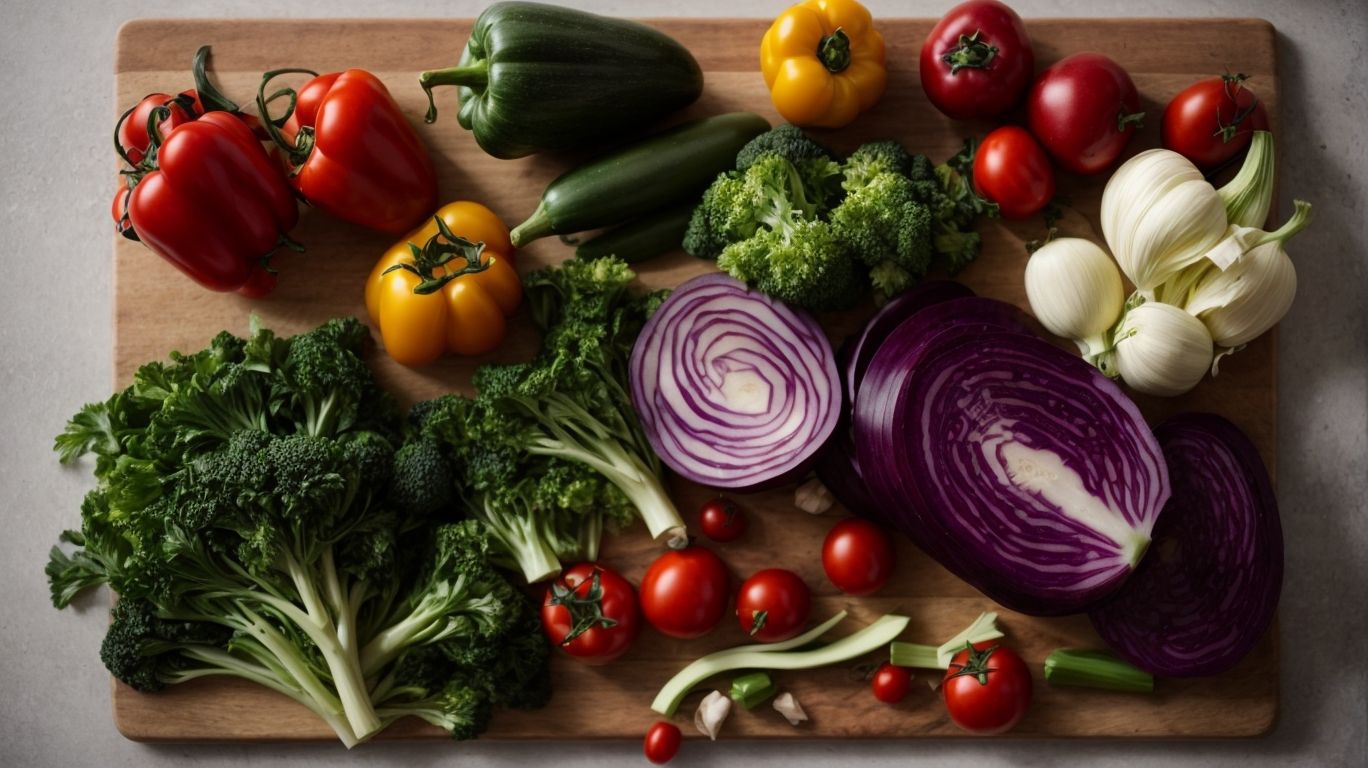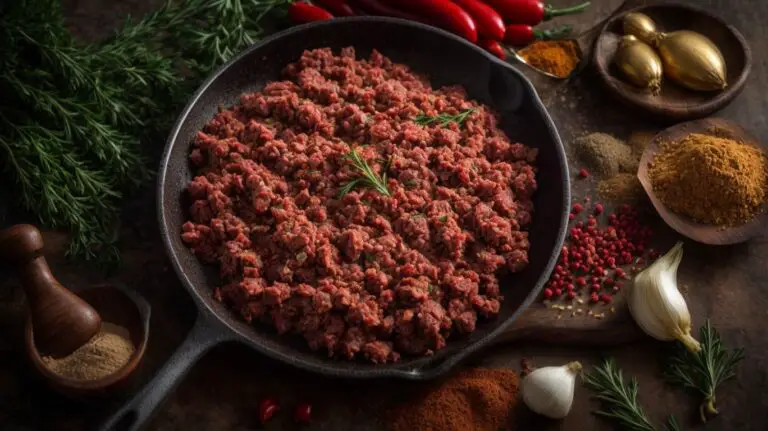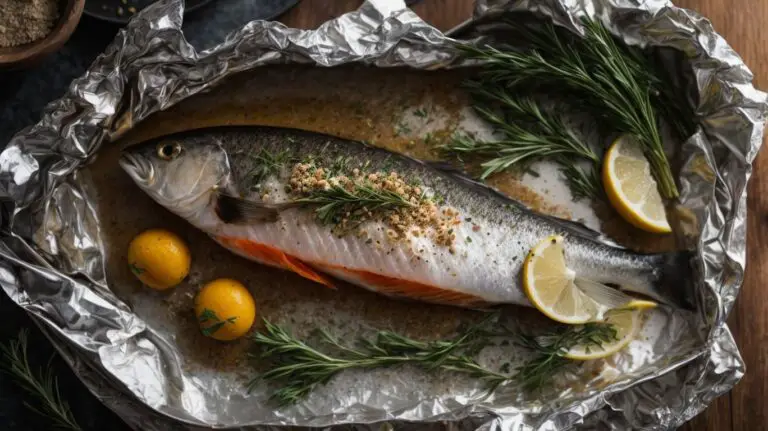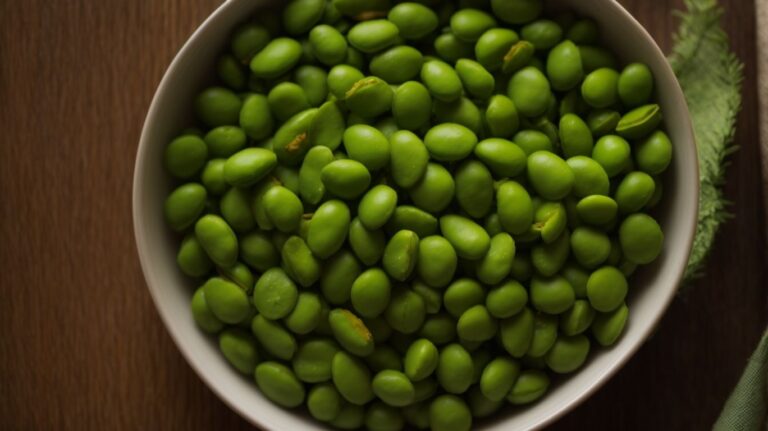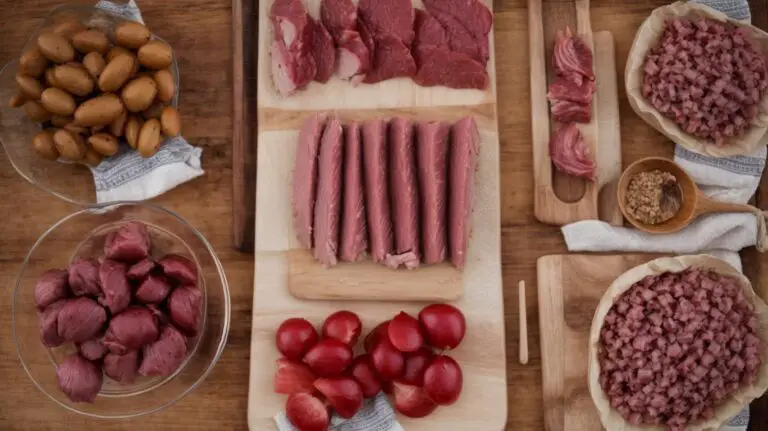How to Cook Vegetables Without Oil?
Are you looking to incorporate more vegetables into your diet but want to avoid using oil in your cooking? Look no further!
In this article, we will explore the reasons why cooking vegetables without oil can benefit your health, lower your calorie intake, and accommodate dietary restrictions.
We will also discuss the best methods for cooking oil-free vegetables, the top vegetables to use, and provide helpful tips for success.
Let’s dive in and discover how to enjoy delicious oil-free vegetables!
Key Takeaways:
Why Cook Vegetables Without Oil?
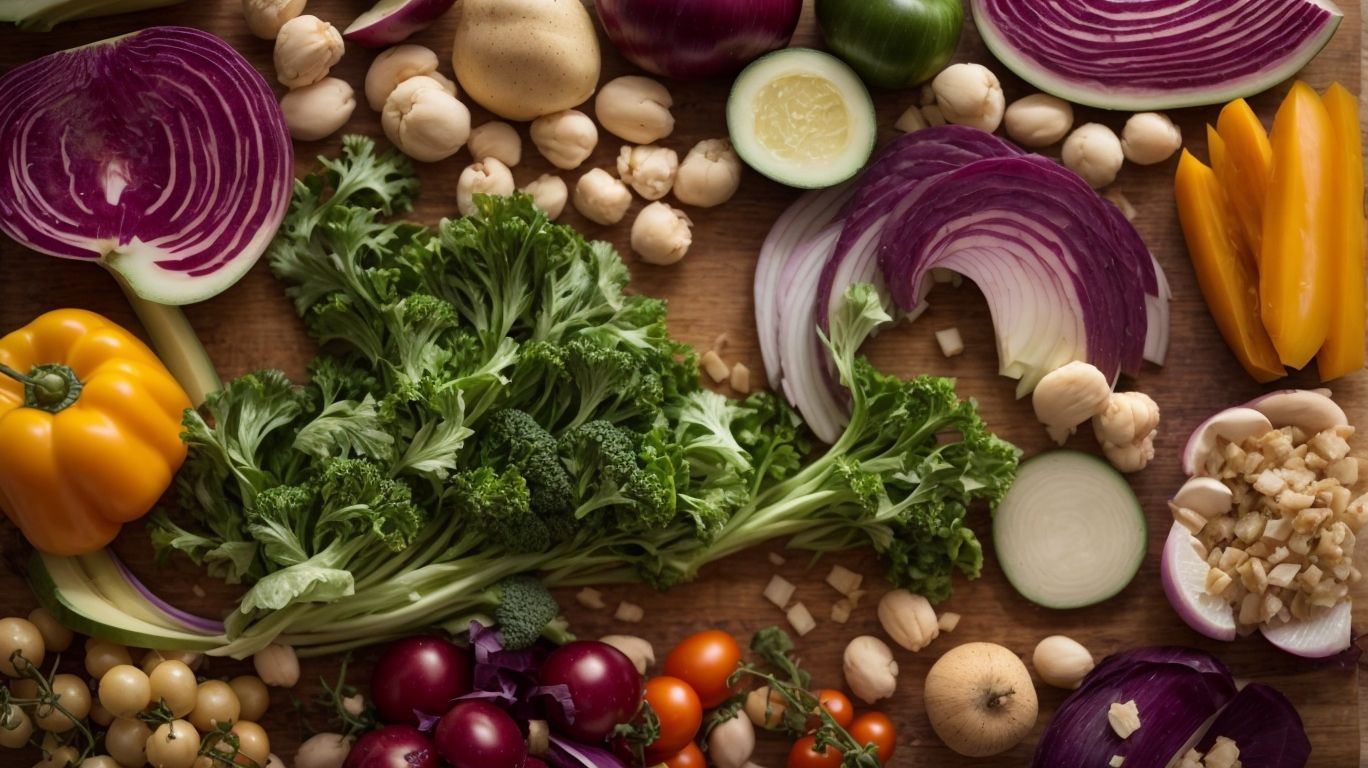
Credits: Poormet.Com – Bryan Jones
Cooking vegetables without oil has become increasingly popular due to its numerous health benefits and alignment with plant-based dietary preferences.
Adopting an oil-free cooking approach not only reduces unnecessary calories and fats from the meal but also helps retain the natural flavors and nutrients of the vegetables, thus enhancing the overall taste and health quotient of the dish. By steaming, boiling, or grilling vegetables instead of sautéing them in oil, individuals can enjoy a lighter and more wholesome meal. This method is particularly beneficial for health-conscious individuals and those seeking to incorporate more plant-based options into their diet. Oil-free cooking is a versatile and delicious way to explore the natural flavors and textures of vegetables, encouraging a varied and nutritious culinary experience.
Health Benefits
Choosing to cook vegetables without oil can offer a range of health benefits, including reduced saturated fat intake and increased consumption of nutrient-rich vegetables.
By opting for oil-free cooking methods, you significantly lower your intake of unhealthy saturated fats linked to cardiovascular issues, obesity, and other health concerns. In place of oil, you can enhance the flavors of your dishes with nutrient-dense seasonings and herbs, ramping up the nutritional value of your meals without sacrificing taste.
Using vegetable broth, lemon juice, or low-sodium soy sauce as cooking mediums can further boost the health benefits of your culinary creations. Incorporating a variety of colorful vegetables into your oil-free recipes not only adds vibrancy and taste but also ups the fiber, vitamins, and antioxidants content of your meals, promoting overall well-being.
Lower Calorie Intake
Cooking vegetables without oil can help in reducing calorie intake, making it a suitable choice for those aiming to maintain a healthy weight or manage caloric consumption.
Oil-free cooking contributes significantly to lowering calorie intake, which is especially beneficial for individuals following a plant-based diet or seeking weight management. By eliminating oil, you can cut out unnecessary fats and calories, resulting in lighter and healthier dishes.
For example, using avocado as a healthy oil substitute in recipes can add creamy richness without excess calories. Sauteing vegetables in water or vegetable broth instead of oil retains their natural flavors while reducing the overall calorie content of the dish.
Dietary Restrictions
Engaging in oil-free cooking can be beneficial for individuals with dietary restrictions, such as those following plant-based diets or needing to avoid certain oils due to allergies or health concerns.
Oil-free cooking, especially popular among those on plant-based diets, offers a wide range of options for creating flavorful dishes without using traditional oils. For individuals with allergies to specific oils or those with health conditions requiring limited fat consumption, oil-free cooking becomes not just a choice but a necessity for maintaining a balanced diet.
For enhanced flavor and nutrition, alternatives like homemade salad dressings using ingredients such as citrus juices, herbs, spices, and nut butters can elevate the taste of dishes while remaining health-conscious. These dressings can be easily customized to suit specific dietary needs and preferences.
What Are the Best Methods for Cooking Vegetables Without Oil?

Credits: Poormet.Com – Ronald White
In terms of cooking vegetables without oil, there are several effective methods available, including sauteing, stir-frying, steaming, roasting, and utilizing air fryers for healthier cooking options.
Each method offers its unique benefits and flavor outcomes.
- Sauteing involves cooking vegetables quickly in a pan with a small amount of water or broth to prevent sticking.
- Stir-frying uses high heat and constant stirring to cook vegetables rapidly while retaining their vibrant colors.
- Steaming involves cooking vegetables over boiling water, preserving their nutrients and natural flavors.
- Roasting vegetables in the oven brings out their natural sweetness and creates a delicious caramelized texture.
- Air fryers are excellent for achieving crispy textures with minimal oil, making them a popular choice for healthier fried options.
Steaming
Steaming vegetables without oil is a popular and healthy cooking method that helps retain nutrients and flavors while preserving the vegetables’ natural textures.
When steaming vegetables, all you need is a basic steamer, which can range from a simple metal basket over boiling water to an electric steamer with multiple compartments. One key benefit of steaming is that it helps vegetables cook evenly and retain their vibrant colors.
To enhance the flavor profile, you can add herbs or spices to the water or in the steaming basket. To achieve optimal results, make sure not to overcook the vegetables; aim for a tender-crisp texture to maintain the nutrients and flavors. Steaming also requires minimal monitoring, making it a convenient cooking method for busy individuals looking to prepare nutritious meals.
Roasting
Roasting vegetables without oil can enhance their natural flavors and textures, creating delicious and nutritious dishes with minimal preparation.
When opting for oil-free roasting, parchment paper is a handy alternative that prevents sticking without the need for added fats. Simply line your baking sheet with parchment paper before arranging the vegetables in a single layer for even cooking. Seasoning plays a crucial role in accentuating the flavors of the vegetables – a sprinkle of sea salt, black pepper, garlic powder, and oregano can work wonders. Keeping an eye on the roasting time is key to achieving the perfect balance of crispiness and tenderness in the vegetables.
Grilling
Grilling vegetables without oil can impart a delightful smoky flavor and charred finish, offering a unique culinary experience with minimal added fats.
When grilling vegetables without oil, it is crucial to properly prepare them beforehand. Seasoning them with herbs, spices, or a marinade can help enhance their natural flavors before they hit the grill. Choosing the right vegetables is also key – opt for sturdy varieties like bell peppers, zucchinis, eggplants, and mushrooms that hold up well to the heat. Preheating your grill thoroughly and ensuring it’s clean will help prevent sticking and ensure even cooking.
Boiling
Boiling vegetables without oil is a simple and effective method that helps retain nutrients while offering a versatile cooking approach suitable for various types of vegetables.
When using water as the primary cooking liquid, you not only avoid the added fats and calories from oils but also allow the natural flavors of the vegetables to shine through. The process is straightforward – simply place the chopped or whole vegetables in a pot of boiling water, ensuring they are fully submerged. Different vegetables require varying boiling times to achieve the desired texture and flavor.
For example, leafy greens like spinach or kale only need a few minutes to wilt, while root vegetables such as potatoes or carrots may take longer to soften. Timing is crucial to prevent overcooking and preserve the vegetables’ nutritional value.
Stir-Frying
Stir-frying vegetables without oil in a wok can create vibrant and flavorful dishes with a satisfying texture, offering a quick and healthy cooking option for busy individuals.
When stir-frying without oil, the wok’s unique shape and heat distribution allow the vegetables to caramelize and retain their natural crunchiness, enhancing the overall taste and visual appeal of the dish. To achieve the perfect stir-fry consistency, it’s essential to cut the vegetables uniformly to ensure even cooking.
Experiment with a colorful mix of vegetables like bell peppers, broccoli, carrots, and snow peas to add both nutritional value and a variety of textures to your stir-fry. Don’t forget to season with soy sauce, garlic, ginger, or your favorite spices to elevate the flavors further, resulting in a delightful culinary experience.
What Vegetables Are Best for Cooking Without Oil?
Certain vegetables are particularly well-suited for oil-free cooking due to their natural moisture content and ability to caramelize when roasted or grilled, such as root vegetables and squash varieties.
Root vegetables like carrots, beets, and sweet potatoes are excellent choices for oil-free cooking as they develop a delicious sweetness when roasted, enhancing their flavors without the need for added oils. Similarly, squash varieties such as butternut squash and acorn squash hold up well to roasting or grilling, becoming tender and flavorful with a slight caramelization on the edges.
- When looking for alternatives to oil in cooking, consider using applesauce as a natural sweetener and moisture enhancer in vegetable dishes. Applesauce can add a touch of sweetness and help vegetables retain their juiciness during the cooking process, making them more enjoyable without the need for excess oils.
Leafy Greens
Leafy greens are ideal for oil-free cooking, as they wilt and release moisture when heated, creating flavorful and nutritious dishes without the need for added oils.
Spinach, for example, cooks down quickly and pairs well with garlic and lemon in sautés or stir-fries. Its tender leaves retain their vibrant green color and delicate texture without the greasiness of oil. On the other hand, kale – a hearty green – holds up to longer cooking times, making it perfect for soups and stews, adding a robust flavor and a satisfying chewiness to dishes. Incorporating these leafy greens into oil-free recipes not only enhances their natural flavors but also preserves their valuable nutrients, offering a healthier cooking alternative for a nutrient-packed meal. Leafy greens get a chance to shine in oil-free cooking, bringing out their unique textures and cooking characteristics for a delightful dining experience.
Cruciferous Vegetables
Cruciferous vegetables, such as broccoli and cauliflower, are well-suited for oil-free cooking due to their ability to develop caramelized flavors when roasted or grilled.
These veggies can be seasoned with spices like garlic powder, paprika, or turmeric to enhance their taste without the need for oil. For a nutrient-rich side dish, try steaming broccoli and cauliflower and then tossing them with a light mustard vinaigrette.
Another great way to enjoy these vegetables is by stir-frying them with soy sauce, ginger, and a splash of vegetable broth for added depth of flavor. To retain their crunchiness, cook them quickly over high heat.
Root Vegetables
Root vegetables, such as potatoes and carrots, are excellent choices for oil-free cooking, offering a hearty and satisfying addition to various dishes when roasted or boiled.
The culinary versatility of these root vegetables lies in their ability to absorb flavors, creating a rich and satisfying taste profile without the need for added oils. Potatoes, with their creamy texture, are perfect for hearty mashed dishes, while carrots’ natural sweetness shines when roasted and caramelized. Incorporate them into soups, stews, salads, or even as standalone side dishes for a nutritious and flavorful meal. Experiment with different cooking methods such as steaming, baking, or grilling to explore the depth of flavors these vegetables can offer.
Nightshade Vegetables
Nightshade vegetables, including eggplant and bell peppers, can be prepared without oil to highlight their distinct flavors and textures, making them versatile additions to oil-free dishes.
These vegetables belong to the Solanaceae family, known for their rich and robust flavors that intensify when cooked. Eggplant, with its creamy texture, can be roasted or grilled to develop a smoky sweetness, perfect for pasta sauces or dips. Bell peppers, on the other hand, add a crunchy, sweet element to salads, stir-fries, and casseroles. By roasting, grilling, or sauteing these nightshades with herbs and spices, one can create enticing oil-free dishes that are both delicious and nutritious.
Tips for Cooking Vegetables Without Oil
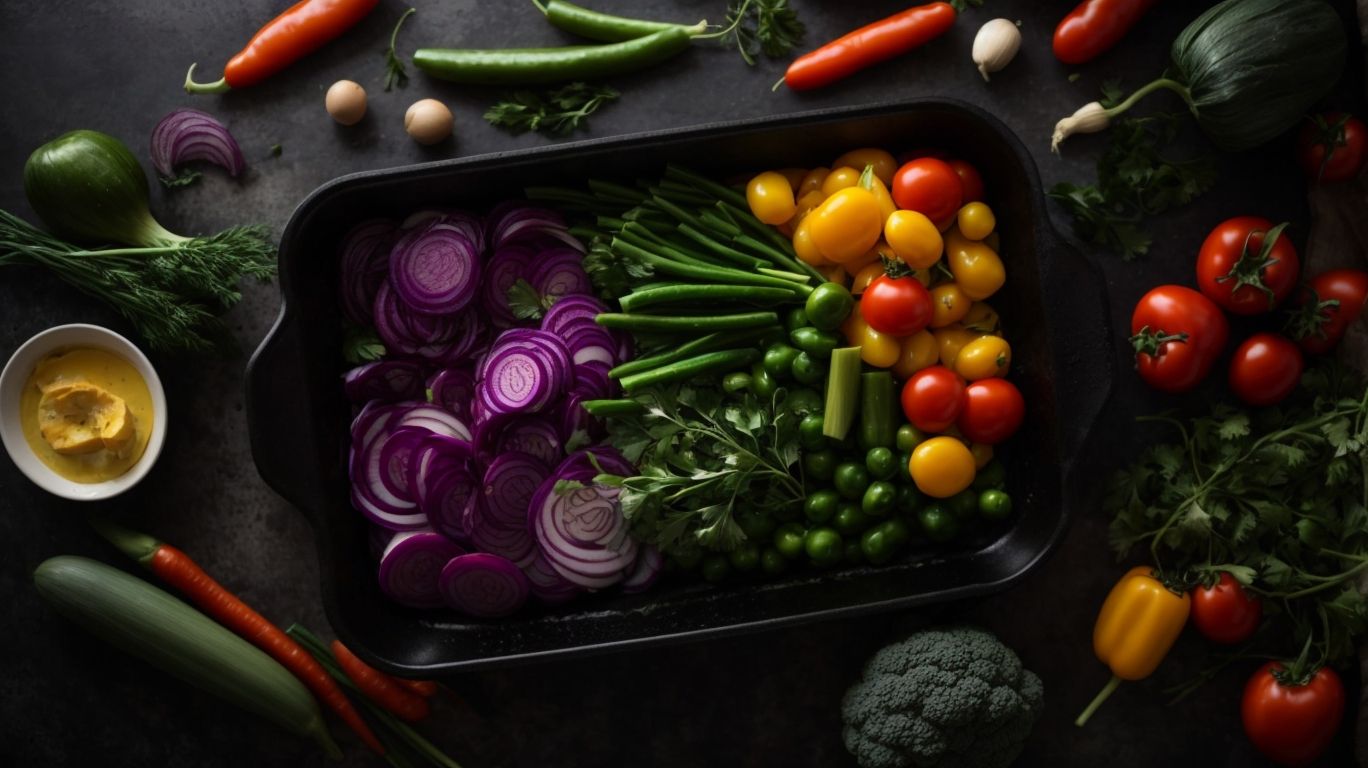
Credits: Poormet.Com – Bradley Nguyen
When cooking vegetables without oil, it’s essential to use the right kitchenware, such as non-stick pans or parchment paper, and leverage flavorful substitutes like herbs and spices to enhance the taste of your dishes.
Non-stick pans are particularly useful for oil-free cooking as they prevent food from sticking and don’t require additional oil for frying or sautéing. To ensure your vegetables cook evenly and don’t burn, preheat the non-stick pan over medium heat before adding the ingredients.
Another smart tip is to use parchment paper when roasting vegetables in the oven. Simply line your baking tray with parchment paper to prevent sticking and achieve a crispy texture without the need for oil.
Use Non-Stick Cookware
Opting for non-stick cookware, such as Teflon pans, can facilitate oil-free cooking by preventing food from sticking and ensuring easy cleanup after preparing vegetable dishes.
When using non-stick pans like Teflon, the surface is designed to repel food, thereby requiring minimal to no oil during cooking, making it an ideal choice for those looking to reduce oil intake. The non-stick property not only simplifies the cooking process but also promotes healthier eating habits by cutting down on excess fats.
Teflon pans are generally lightweight, making them easy to handle and maneuver, which can be especially helpful for those who enjoy experimenting with various cooking techniques. When selecting non-stick cookware, ensure you choose high-quality, durable pans with a reliable non-stick coating to ensure prolonged use without compromising the cooking quality.
Add Flavor with Herbs and Spices
Enhance the flavor of oil-free vegetable dishes by incorporating a variety of herbs and spices, such as curry powder, to create aromatic and delicious meals without relying on added fats.
Herbs and spices serve as the secret weapons in oil-free cooking, providing a burst of flavor that can rival even the most indulgent dishes. From the earthy warmth of cumin to the zesty brightness of fresh herbs like basil and cilantro, there are endless possibilities to explore.
By experimenting with different combinations, you can unlock a world of taste sensations that will keep your oil-free meals exciting and satisfying. Mix curry powder with a hint of turmeric, coriander, and ginger to infuse your dishes with a rich, complex flavor profile that will leave your taste buds dancing.
Use Vegetable Broth or Water as a Cooking Liquid
Substitute oil with vegetable broth or water as a flavorful cooking liquid to infuse vegetables with moisture and enhance their taste profiles, creating delicious dishes like pumpkin soup without added fats.
Using vegetable broth or water in place of oil offers numerous benefits beyond just reducing fat content in your dishes. Vegetable broth is a fantastic way to add depth and richness to your recipes while keeping them low in calories. The broth serves as a flavorful base, infusing the vegetables with savory notes that elevate the overall taste. Unlike oil which can sometimes result in greasiness, vegetable broth or water adds moisture without compromising the dish’s texture or flavor.
For instance, when making a hearty pumpkin soup, replacing oil with vegetable broth not only cuts down on saturated fats but also intensifies the earthy sweetness of pumpkin. The broth helps create a velvety consistency without the need for heavy cream, showcasing how a simple substitution can make a significant impact on both the nutritional value and taste of your meals.
Don’t Overcook Vegetables
Maintain the texture and nutrient content of vegetables in oil-free cooking by avoiding overcooking and incorporating ingredients like lemon juice to brighten flavors and preserve the vegetables’ natural vibrancy.
Excessive cooking time can lead to vegetables losing their crispiness and becoming mushy, ultimately dulling their taste and nutritional value. Lemon juice plays a crucial role in not only enhancing the overall flavor profile but also in preventing vegetables from turning overly soft during the cooking process.
To ensure vegetables are perfectly cooked, pay attention to their color and firmness. Opt for quick cooking methods like steaming, stir-frying, or roasting at high temperatures to retain the vibrant colors and textures of the vegetables.
Conclusion: Enjoying Oil-Free Vegetables
Embracing oil-free cooking for vegetables opens up a world of culinary possibilities, allowing you to savor the natural flavors and textures of fresh produce while promoting a healthy and wholesome approach to cooking.
Cooking without oil not only reduces the overall calorie content of your dishes but also highlights the inherent flavors of vegetables, enhancing your dining experience. By using alternative cooking methods like grilling, roasting, and steaming, you can achieve delicious results without compromising on taste or health benefits.
Oil-free cooking can also be a fun and creative way to experiment with different herbs, spices, and seasoning combinations to elevate the taste profile of your vegetable dishes. Whether you’re making vibrant stir-fries, hearty salads, or comforting soups, the absence of oil challenges you to explore new ingredients and flavor pairings.
Frequently Asked Questions
Can vegetables be cooked without oil?
Yes, there are many ways to cook vegetables without using oil, such as steaming, roasting, and stir-frying with water or broth.
What are the benefits of cooking vegetables without oil?
Cooking vegetables without oil can reduce the overall fat and calorie content of your dish, making it healthier for you. It also allows the natural flavors of the vegetables to shine through.
How do you steam vegetables without oil?
To steam vegetables without oil, simply place them in a steamer basket over a pot of boiling water. Cover and steam for a few minutes until they reach your desired level of tenderness.
Can you roast vegetables without oil?
Yes, you can roast vegetables without oil by tossing them in a little bit of water or broth before putting them in the oven. This will help them crisp up without the added fat.
Is it possible to stir-fry vegetables without oil?
Absolutely! Instead of using oil, you can stir-fry vegetables with a little bit of water or broth. This method also helps to keep the vegetables from sticking to the pan.
Are there any vegetables that should not be cooked without oil?
Some vegetables, such as avocados and olives, contain healthy fats and do not need to be cooked without oil. However, most vegetables can be prepared without oil for a healthier option.

